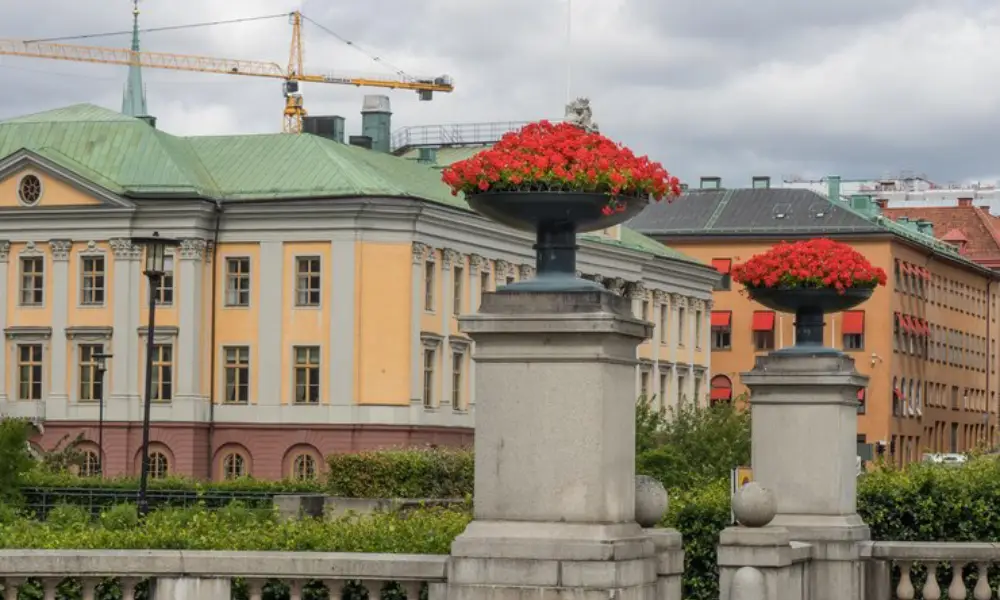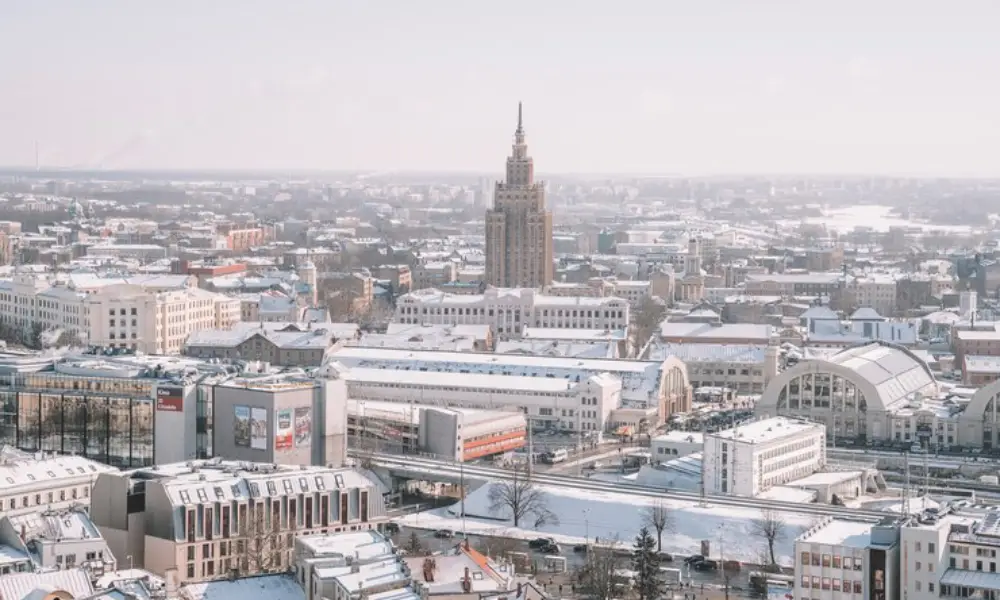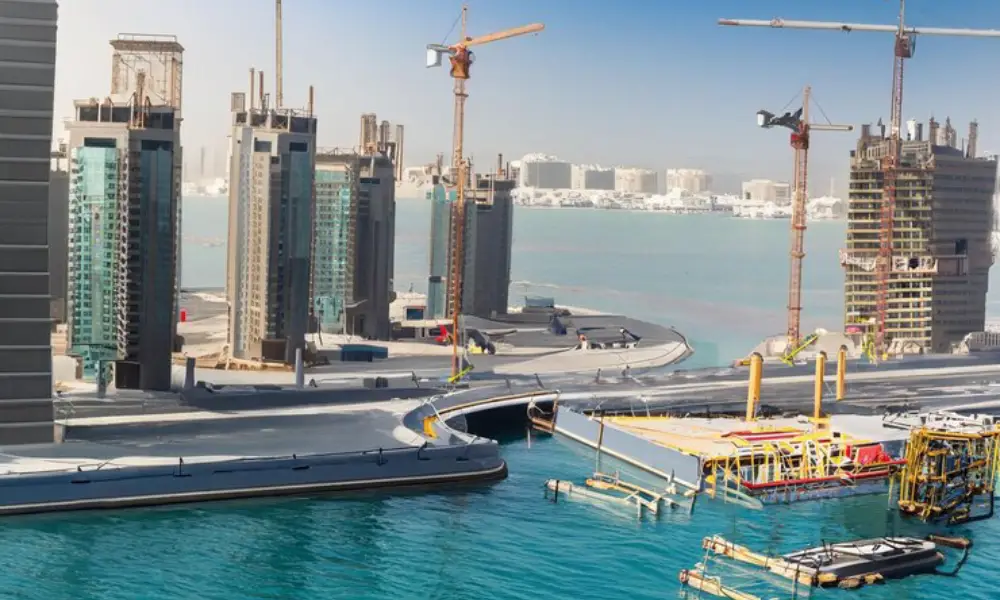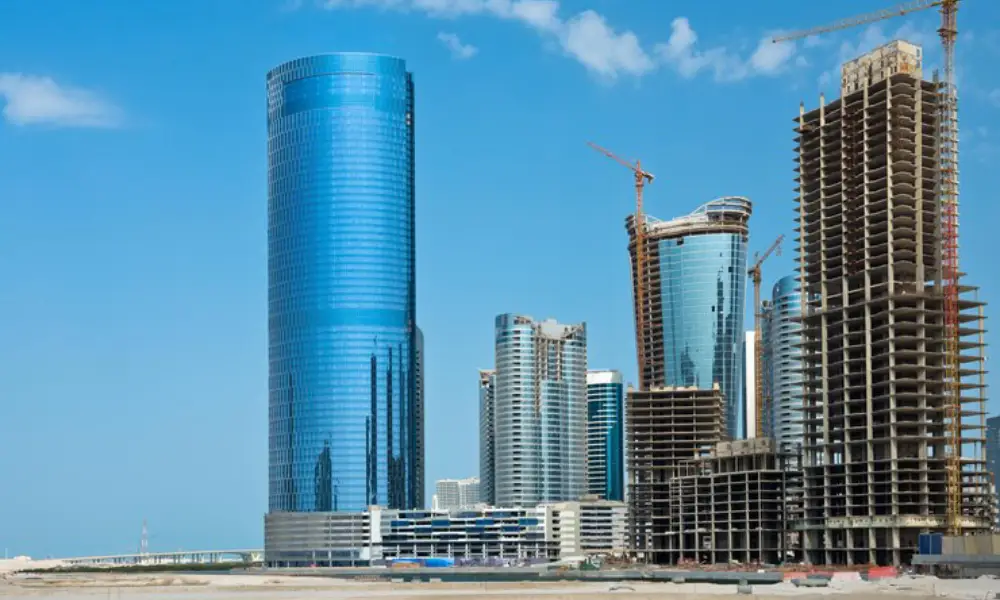
The Future of Architecture in Russia
Modern Trends and the Importance of Future Studies in Russian Architecture
Architecture has always been a mirror of the cultural, social, and economic identity of any society, and Russia, with its rich and diverse history, is a prominent example of the integration of tradition and modernity in urban structure and building design. In recent decades, the acceleration of technology, climate change, and social transformations have significantly reshaped the architectural landscape of this country. Future studies in architecture are not limited to predicting new styles and materials; they also involve understanding societal needs, urban flexibility, and aligning design with environmental and cultural values.
In Russia, architects and urban planners seek to create a balance between historical heritage, modern needs, and advanced technologies. Modern architectural trends, including the use of sustainable materials, smart buildings, multifunctional spaces, and human-centered urban design, are shaping the urban future of the country. These trends not only alter the cityscape but also redefine the daily life experience of citizens, enabling better interaction between humans and the built environment.
Therefore, examining the future of architecture in Russia from the perspectives of innovation, sustainability, and social alignment is essential for understanding urban development trends and shaping spaces that integrate culture, technology, and nature. This article aims to present a clear and engaging picture of the upcoming architectural landscape in Russia and illustrate how the past, present, and future are interconnected in this journey.
Historical Transformations in Russian Architecture and Their Impact on Contemporary Styles
Russian architecture tells a complex and dynamic story of cultural, religious, and political integration, with each historical period leaving its mark on contemporary styles. From wooden churches and Orthodox architecture with colorful domes in the Middle Ages to the grandeur of Baroque and Neoclassical periods in the 18th and 19th centuries, every architectural style reflected national identity, political power, and the collective spirit of the Russian people.
During the Soviet era, symbolic architecture and the Stalinist style, with massive buildings, symmetrical lines, and strong symbolism, showcased the power of the state and its ideological goals. After the collapse of the Soviet Union, a wave of modern and international designs entered Russia, blending minimalism, glass, and steel with inspiration from global styles. These historical transformations provided a solid foundation for today’s architects to connect the past with modern innovations and create styles that are both beautiful and functional.
Today, the influence of these historical transformations is clearly visible in contemporary Russian projects: the use of classical elements in building facades, combining traditional and modern materials, and drawing inspiration from traditional forms to create modern urban spaces are all examples of how the past and present interact in Russian architecture. Understanding this historical path is key to comprehending innovative trends and the future outlook of architecture in the country.
The Impact of Climate and Environmental Changes on Urban Design and Architecture
Climate and environmental changes are among the most significant factors shaping architecture and urban design in Russia. With its vast range of climatic zones, from the coldest regions of Siberia to the temperate coasts of the Black Sea, the country faces diverse challenges that require architects to create flexible, resilient, and environmentally adaptive designs. Rising temperatures, irregular precipitation, and extreme shifts in weather patterns have made buildings with better insulation, smart ventilation, and efficient energy management more essential than ever.
In urban design, climate changes have prompted a reevaluation of public spaces and infrastructure to withstand floods, heat waves, and other natural disasters. Parks, urban gardens, and green systems have become integral parts of urban planning to reduce heat effects and improve air quality. Additionally, the use of sustainable and local materials, rainwater collection and recycling systems, and renewable energy enables Russian architects to construct buildings that are not only aesthetically pleasing but also environmentally compatible.
The impact of these environmental changes extends beyond structures, reshaping the overall approach to urban planning and city life. Future Russian architects, by considering climate and natural surroundings, aim to balance human comfort, environmental protection, and urban flexibility, ensuring that cities and buildings are
both resilient and inspiring.

Technological Innovations in Architecture: Artificial Intelligence, 3D Modeling, and Smart Buildings
Technological innovations have brought a radical transformation to Russian architecture, fundamentally changing both design and construction processes. Artificial intelligence, 3D modeling, and smart buildings are tools that enable architects to create innovative spaces that combine precision, speed, and aesthetic appeal.
Artificial intelligence allows for the analysis of vast urban data, predicting environmental behaviors, and optimizing energy consumption. Through intelligent algorithms, architects can develop integrated designs that balance performance with visual appeal. Meanwhile, 3D modeling and virtual reality make the design process more transparent and allow clients and residents to experience spaces before construction, reducing errors and enabling the creation of complex forms and structures that were previously impossible.
Smart buildings represent a prominent model of integrating technology with architecture, where systems for energy, lighting, security, and ventilation are automatically managed, providing a more comfortable, efficient, and sustainable living experience. In Russia, these projects contribute to improving residents’ quality of life, reducing environmental impact, and redefining architecture and urban life, making innovation a key driver for reshaping future cities and buildings.
Sustainable Architecture and Energy Efficiency: Using Renewable Resources and Eco-Friendly Materials
Technological innovations have brought a fundamental transformation to Russian architecture, reshaping the landscape of design and construction. Artificial intelligence, 3D modeling, and smart buildings are tools that not only make the design process faster and more accurate but also enable the creation of innovative spaces and personalized urban living experiences.
Artificial intelligence in architecture allows for the analysis of large-scale urban data, prediction of environmental behavior, and optimization of energy consumption. With the help of intelligent algorithms, architects can design spaces that are both functionally efficient and aesthetically refined. 3D modeling and virtual reality make the design process more transparent, allowing clients and residents to experience spaces virtually before construction. These technologies not only reduce design errors but also open possibilities for creating complex and creative architectural forms that were once impossible.
Smart buildings are a clear example of the integration of technology and architecture. These structures use automated systems to control temperature, lighting, security, and energy — offering a more comfortable, efficient, and sustainable living experience. In Russia, modern urban projects utilizing these technologies not only enhance residents’ quality of life but also reduce environmental impact and optimize resources. Thus, technology has become not just a tool but a driving force in redefining architecture and urban life in Russia’s future.
Smart Cities and Spatial Design for Modern Living in Russia
Smart cities in Russia represent the future of urban life, where technology integrates seamlessly with urban design and human well-being. These cities rely on smart data, the Internet of Things, and digital management systems, enabling efficient monitoring and optimization of energy, transportation, waste management, and security. The main goal is to create a daily living environment that is easier, safer, and more sustainable for residents.
In spatial design, Russian architects aim to create multifunctional environments that combine work, recreation, social interaction, and green spaces. Flexible design, safe pedestrian pathways, clean transportation systems, and digital infrastructure provide a fully integrated modern living experience that meets the growing needs of citizens.
Urban smart city projects in Russia demonstrate that successful spatial design goes beyond aesthetics and functionality; it must harmonize with technology and data to create vibrant, environmentally resilient cities equipped for contemporary urban life, where humans, technology, and nature coexist in complete balance.
Integrating Traditional Russian Architecture with Contemporary and International Styles
Integrating traditional Russian architecture with contemporary and international styles is one of the most prominent trends in modern architecture in the country. It aims to combine historical identity and local culture with modern design needs and a global architectural language. Traditional Russian architecture, with its colorful domes and intricate ornamentation, reflects national art and culture and now serves as inspiration for modern projects, ensuring contemporary buildings retain their cultural and historical roots.
Russian architects use modern materials, clean lines, and advanced techniques to reinterpret these traditional elements. Examples include buildings with modern facades and high functional performance while drawing inspiration from traditional Russian decorations and forms. This approach not only provides visual beauty but also creates a bridge between the past and the future in architecture.
Additionally, integrating international styles such as minimalism, green architecture, and technological designs with local architecture offers a vision that is simultaneously global and unique, reflecting Russian culture, reinforcing national identity, and opening opportunities for innovation and creativity in modern urban spaces.

Interior Design Trends: From Minimalism to Contemporary Art
Interior design trends in Russia reflect social, cultural, and technological transformations, showing how interior spaces can be functional, beautiful, and inspiring at the same time. Minimalism, with its clean lines, neutral colors, and focus on functionality, is a common approach in modern Russian interior design. This style provides a sense of calm and order while maximizing natural light and airflow within spaces.
Alongside minimalism, contemporary and experimental art has gained prominence, using color, texture, and creative artworks to create vibrant and unique environments that reflect individual and cultural identity. Modern interior design in Russia often seeks to balance aesthetics and functionality, ensuring spaces meet daily life needs while enhancing user well-being.
The combination of minimalism and contemporary art merges beauty with flexibility, allowing for multifunctional spaces adaptable to changing resident needs and lifestyles. This approach highlights that interior design is not just a backdrop for life but an active element in the urban and cultural experience, playing a key role in shaping modern living in Russia.
The Impact of Urban and Economic Policies on Future Architectural Projects
Urban and economic policies play a crucial role in shaping the trajectory of future architectural projects in Russia, as legal frameworks, budgets, and development priorities determine the direction of design and implementation. Urban regulations and master plans set constraints and opportunities that architects must consider, from building heights and population density to the use of green spaces and transportation infrastructure. Economic policies also influence investment types, project funding, and urban development priorities.
For instance, government support for sustainable and low-energy projects encourages green architecture and the use of eco-friendly materials, while economic policies promoting foreign investment stimulate the growth of modern buildings, skyscrapers, and mixed-use developments. Conversely, budget constraints and economic pressures push architects to utilize resources creatively and design flexible, efficient spaces.
Overall, urban and economic policies provide an environment that enables architects and urban planners to create projects that are balanced, practical, and innovative. This demonstrates that the future of architecture in Russia is influenced not only by technology and art but is directly linked to economic decisions and urban planning policies, with project success depending on a thorough understanding of these frameworks.
Challenges and Opportunities for Architects and Investors in Russia
Architects and investors in Russia face a combination of challenges and opportunities that shape the future of architecture in the country. Among the challenges are climate change, the need for sustainable buildings, and adapting to modern technologies. Legal complexities, budget constraints, and economic fluctuations also make design and execution more difficult, requiring careful planning and high flexibility.
Despite these challenges, significant opportunities exist. The country is experiencing urban growth, increased interest in sustainable and smart buildings, and the adoption of contemporary and international styles, providing a favorable environment for innovation and investment. Additionally, government support for urban and infrastructure projects enables the implementation of creative and ambitious architectural ideas.
Overall, architects and investors in Russia face a mix of constraints and opportunities, and success depends on a deep understanding of the economic, social, and cultural environment. Those who can integrate creativity, technology, and economic strategy will be able to create prominent, forward-looking projects that meet today’s needs and adapt to the developments of modern urban life in Russia.

Landmark Projects and Successful Examples of Modern Architecture in Russia
In recent decades, Russia has witnessed landmark projects in modern architecture that combine technology, sustainable design, and artistic creativity, significantly transforming the urban landscape. Notable examples include the Zarya Cultural Center in Moscow, which extensively uses geometric forms and glass to maximize natural light and create a dynamic and engaging environment for visitors. This project exemplifies how modern Russian architecture integrates functionality, aesthetics, and social interaction.
Other successful projects include high-rise and mixed-use complexes in Saint Petersburg and Moscow, featuring green architecture, efficient energy systems, and attractive public spaces, redefining the modern urban experience. Contemporary museums and art galleries, with their unique designs, not only display art but also serve as symbols of innovation and cultural identity.
These examples illustrate that modern architecture in Russia goes beyond physical construction to connect culture with technology and contemporary life. The success of these projects highlights the importance of integrating innovation, sustainability, and creativity to create spaces that meet human, social, and environmental needs in a balanced way.
The Role of Architecture in Shaping Cultural and Social Identity in the Coming Decades
Architecture is more than just building structures; it is a key tool for shaping the cultural and social identity of society. In Russia, this role will become increasingly important in the coming decades, as architects and urban planners aim to create spaces that reflect the culture, history, and collective values of the people while being functional and aesthetically pleasing. Buildings, squares, gardens, and public spaces serve as urban symbols that enhance social experiences and foster a sense of belonging and national identity.
Integrating traditional Russian elements with modern design, incorporating contemporary art into urban spaces, and creating iconic buildings all contribute to strengthening cultural identity. Architecture also facilitates social interaction, increases citizen engagement, and strengthens community bonds. Flexible and multifunctional designs encourage residents to participate in social and cultural activities, transforming cities into vibrant and lively environments.
In the coming decades, Russian architecture will become a strategic tool for preserving cultural identity while responding to modern needs. Buildings and urban spaces will not merely be physical structures but carriers of values, memories, and social interactions, playing an active role in building a cohesive, culturally rich, and dynamic society.
Predicting Architectural Trends Until 2050 and the Vision for Urban Development
By 2050, architecture and urban planning in Russia are expected to undergo profound transformations influenced by advanced technology, climate change, and social and cultural shifts. Buildings will become smarter, with automated systems for energy, lighting, security, and ventilation, providing a more comfortable, sustainable, and efficient living experience. Sustainable architecture will play a central role, using eco-friendly materials, high energy efficiency, and green design to reduce environmental impact and create cities resilient to climate change.
The vision for urban development includes the expansion of smart cities, digital infrastructure, and multifunctional public spaces, radically changing the urban living experience. Urban design will focus on human needs, flexibility, and quality of life, with spaces that promote social interaction, recreation, work, and education simultaneously, transforming cities into vibrant and attractive environments.
Traditional Russian architecture will continue to be integrated with international styles, ensuring that cities maintain their cultural and historical identity while embracing innovation and modern design. Overall, the future of Russian architecture by 2050 presents an integrated picture where technology, sustainability, and culture intersect to create buildings and cities that meet human, environmental, and social needs while offering a modern, smart, and inspiring living experience for future generations.

A Holistic Vision of Innovation, Culture, and Sustainability in Russian Architecture
Architecture in Russia presents a future that reflects a creative coexistence of innovation, culture, and sustainability. This vision demonstrates that architecture goes beyond constructing buildings to become a powerful tool for redefining cultural identity, enhancing quality of life, and protecting the environment. Integrating traditional elements with modern design, utilizing advanced technologies, and creating smart and sustainable buildings all contribute to developing urban spaces that meet today’s needs while addressing tomorrow’s challenges.
In the coming decades, Russian architects and urban planners, relying on technology, art, and environmental knowledge, will create projects that combine beauty and functionality while strengthening cultural and social belonging for residents. This vision provides an inspiring model for modern cities, where humans, nature, and technology coexist in complete harmony. Ultimately, Russian architecture, with its approach that merges innovation with respect for culture and sustainability, can build a bright, inspiring, and sustainable future for cities and their inhabitants.

